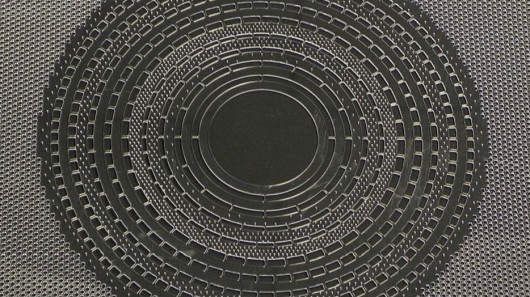Researchers create invisibility cloak for sound
By Ben Coxworth
13:30 December 22, 2011
 Dr.
Nicolas Stenger's microstructured polymer plate
Dr.
Nicolas Stenger's microstructured polymer plate
Many of the current experimental "invisibility cloaks" are based around the same idea - light coming from behind an object is curved around it and then continues on forward to a viewer. That person is in turn only able to see what's behind the object, and not the object itself. Scientists from Germany's Karlsruhe Institute of Technology have applied that same principle to sound waves, and created what could perhaps be described as a "silence cloak."
For the experiments, Dr. Nicolas Stenger constructed a relatively small, millimeter-thin plate, made of both soft and hard microstructured polymers. Different rings of material within the plate resonated at different frequencies, over a range of 100 Hertz.
When viewed from above, it was observed that sound wave vibrations were guided around a central circular area in the plate, unable to either enter or leave that region. "Contrary to other known noise protection measures, the sound waves are neither absorbed nor reflected," said Stenger's colleague, Prof. Martin Wegener. "It is as if nothing was there."
While the plate is a small-scale proof-of-concept, the principles at play in it could perhaps ultimately be used to shield people in a "cloaked" area from loud background noises, or to keep eavesdroppers who aren't in that area from hearing those peoples' private conversations.
Hopefully, should the technology be developed to that point, it will work better than Maxwell Smart's Cone of Silence.
A paper on the Karlsruhe research was recently published in the journal Physical Review Letters.
Copyright © gizmag 2003 - 2011 To subscribe or visit go to: http://www.gizmag.com